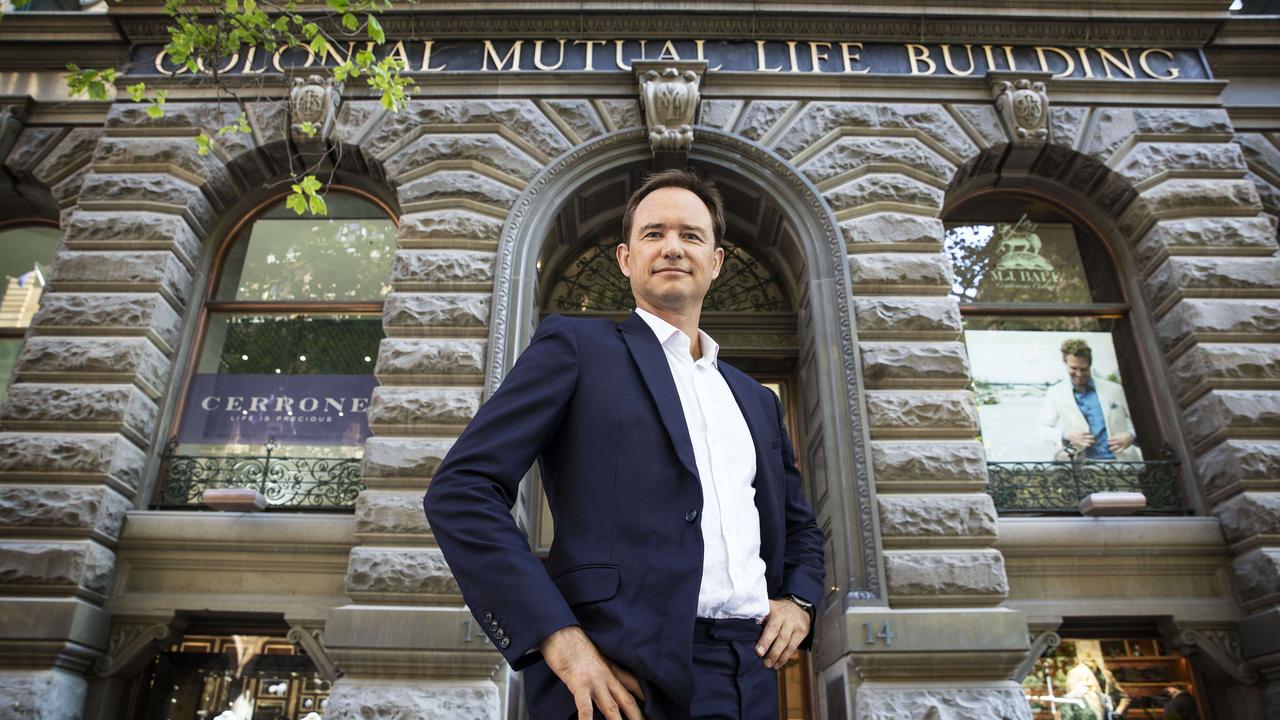Joseph Healy start-up targets smaller firms unhappy with banks
The plan is to deploy “cutting-edge” technology and a relationship banking model to companies.
Healy was guarded yesterday, citing a host of confidentiality agreements that even extend to the name of his start-up. However, he has gathered a team of 10 senior bankers, including co-chief executive and former senior NAB colleague David Hornery.
They plan to deploy “cutting-edge” technology and a relationship banking model to companies with an annual turnover of up to $20 million.
Ah, another fintech company, you might say. Healy blanches at the description.
The business model owes much more to the British challenger banks Aldermore and Shawbrook, founded in 2009 and 2011, respectively, but now listed after successful initial public offerings in the first half of last year.
Like Healy’s unnamed venture, both are specialist SME lenders.
Aldermore has no branch network but serves customers online, by phone and face-to-face through a network of 12 regional offices located around Britain. Its so-called brand pillars are exceptional service, total transparency and community.
Shawbrook is much the same, having built its lending book to more than £3.3 billion by the end of last year. It became a FTSE 250 last June, soon after it listed.
The way Healy sees it, the $250bn SME market in Australia is ripe for the plucking. It offers total revenue of $15bn, after-tax earnings of $6bn and is highly profitable, with a return on equity of 17-22 per cent.
The other factor that makes the market ripe for disruption is the high level of SME disengagement with their banks.
Last November, after reading a Four Pillars column that explored the background to NAB’s 19 basis-point crunch in its second-half business lending margin, Healy got in touch.
He said all the majors were suffering from diseconomies of scale, pointing to comments from Bank of England that processes were being “industrialised” to drive down costs.
Global capital, he said, was backing credible transformation models. “It’s the emerging reality that the majors have inadvertently created,” Healy said. “Relationship banking will re-emerge, as SMEs want it, but it may not come from the major banks.”
The widespread dissatisfaction among SMEs is reflected in a recent East & Partners survey that found SMEs with annual turnover of $5m-$20m have a loyalty rating to their banks of 11.2 on a scale of 10 (not loyal) to 100 (very loyal).
East also found that customer advocacy across the majors was virtually non-existent.
Healy has toured New York, London, Hong Kong and Beijing in the past nine months to secure backing, with investors “comforted” by the success of the British challenger banks.
Apart from Hornery, Healy’s group of 10 executives includes senior CBA banker Kathy Cummings, 25-year NAB business banking veteran Tim Alexander and Standard Chartered executive general manager Chris Bayliss.
Apple of ANZ’s eye
It’s rare for a humble product launch to shift the dial at a major bank, but there’s some serious gloating going on at ANZ after its ApplePay triumph.
Since late last month, when ANZ became Australia’s first bank to support Apple’s digital wallet, the number of transaction accounts opened online that are new to the bank has spiked 50 per cent on a year ago.
The lender’s anz.com portal has a long history of generally immovable numbers. But even there, traffic has been up 5-10 per cent since the ApplePay launch.
Apple appeared to have hit an impasse in Australia until ANZ broke ranks with its rivals.
Last year, Commonwealth Bank chief executive Ian Narev downplayed the role of ApplePay, noting the banks had developed their own mobile payment apps.
For Apple, though, Australia was always an important market. About 60 per cent of all transactions are already contactless — a much higher rate of penetration than in the US.
The halo effect of being the first major bank to link with ApplePay is an important early win for new ANZ chief executive Shayne Elliott, who has nominated digital transformation as one of his strategic priorities.
CBA fails to hit targets
Commonwealth Bank has closed out the major-bank profit reporting season with a March quarter trading update falling slightly short of expectations, reflecting the same credit issues reported by its peers with September balance dates.
The group’s net interest margin was flat, as well, compared with the December half-year.
Competition has clearly eroded the margin benefit from the industry’s out-of-cycle rate rise this year.
In the institutional bank, a handful of exposures headlined by collapsed steelmaker Arrium saw group impairments jump to 25 basis points of gross loans, up from 17 basis points for the six months to December. As for the consumer bank, arrears rates were in line with expectations, with home lending arrears still low despite pockets of weakness in WA and Queensland.
gluyasr@theaustralian.com.au Twtitter: @Gluyasr



Joseph Healy, the former head of National Australia Bank’s business bank, is close to launching an ambitious venture that seeks to exploit the high level of dissatisfaction among small- and medium-sized businesses with their main financial institutions.